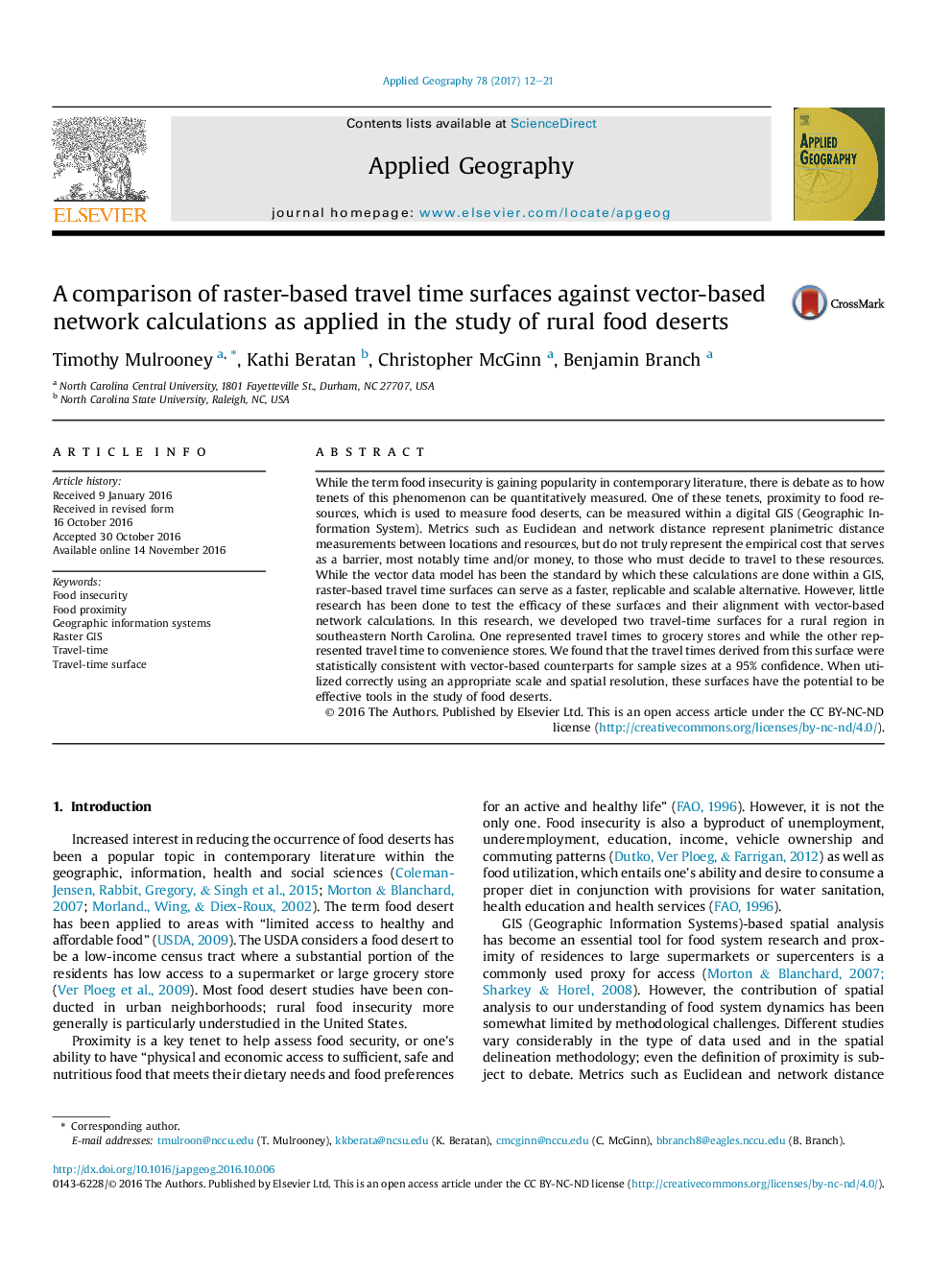| کد مقاله | کد نشریه | سال انتشار | مقاله انگلیسی | نسخه تمام متن |
|---|---|---|---|---|
| 6458511 | 1421039 | 2017 | 10 صفحه PDF | دانلود رایگان |
- There are many ways to measure proximity to food resources.
- We use the raster data model to measure the proximity tenet of food insecurity.
- We tested the efficacy of these techniques versus vector-based standards.
- Results show little difference between vector and raster techniques.
While the term food insecurity is gaining popularity in contemporary literature, there is debate as to how tenets of this phenomenon can be quantitatively measured. One of these tenets, proximity to food resources, which is used to measure food deserts, can be measured within a digital GIS (Geographic Information System). Metrics such as Euclidean and network distance represent planimetric distance measurements between locations and resources, but do not truly represent the empirical cost that serves as a barrier, most notably time and/or money, to those who must decide to travel to these resources. While the vector data model has been the standard by which these calculations are done within a GIS, raster-based travel time surfaces can serve as a faster, replicable and scalable alternative. However, little research has been done to test the efficacy of these surfaces and their alignment with vector-based network calculations. In this research, we developed two travel-time surfaces for a rural region in southeastern North Carolina. One represented travel times to grocery stores and while the other represented travel time to convenience stores. We found that the travel times derived from this surface were statistically consistent with vector-based counterparts for sample sizes at a 95% confidence. When utilized correctly using an appropriate scale and spatial resolution, these surfaces have the potential to be effective tools in the study of food deserts.
Journal: Applied Geography - Volume 78, January 2017, Pages 12-21
